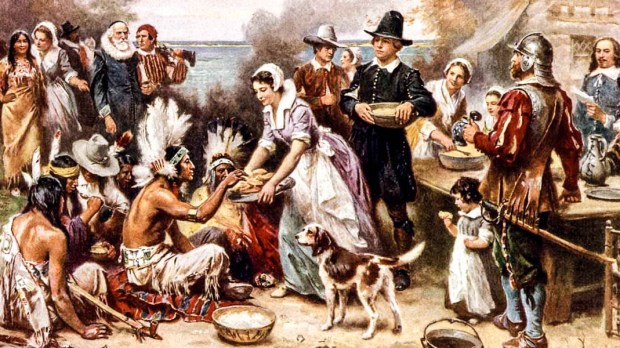Lenten Campaign 2025
This content is free of charge, as are all our articles.
Support us with a donation that is tax-deductible and enable us to continue to reach millions of readers.
Squanto, the Native American at the center of the modern Thanksgiving Day story, probably was baptized as a Catholic, according to an expert on Native American history.
Tisquantum (Squanto’s real name) was “most likely baptized by Franciscans, was certainly baptized by Anglicans, and probably not by Puritans even though recognized by them as a Christian,”Neal Salisbury, of Smith College in Massachusetts, said in an email. “The colonists refer to him as a Christian but say nothing about whether he attended their church or was baptized.”
Salisbury warns that the historical sources “aren’t always explicit.” But in a forthcoming manuscript, he traces Tisquantum’s journeys back and forth across the Atlantic.
“Most scholars fail to note that, 20 years before the advent of Puritan missionaries, Tisquantum was New England’s first Christian Indian,” he writes in the unpublished work, a late draft of which he shared with Aleteia.
Born in Patuxet (modern Plymouth, Massachusetts) around 1585, Tisquantum was captured in 1614 by one of English explorer John Smith’s associates, Thomas Hunt.Hunt brought Tisquantum and some two dozen other Wampanoags to Málaga, Spain, intending to sell them into the slave trade.
Málaga, Salisbury explains, had been the commercial center of the Muslim Emirate of Granada “until Catholic forces seized it in 1487 during their ‘reconquest’ of Spain.” But when some local friars —probably Franciscans— learned that the captives had been brought from a “Christian land,” they spirited some of them away and had them instructed in the Christian faith. Salisbury believes that Tisquantum then moved into an English trader’s household and attended private Anglican services in Málaga.
“He undoubtedly impressed both Spanish and English with his linguistic skills, his Christian piety, and his penchant for cultivating close personal relationships and loyalties,” Salisbury writes. “It is clear that he grasped and used to his advantage the multiple distinctions and agendas of nationality, religion, status, and power among those around him on the dock.”
Salisbury is also working on a book that examines the lives of several Natives and Europeans who, like Tisquantum, crossed the cultural boundaries that separated the two peoples.
From Málaga, Tisquanum was taken to London, moving into the home of a wealthy, influential merchant named John Slany. The Native American probably attended Anglican services at St. Peter’s Church in the Cornhill section of the City of London.
Slany, who was the Newfoundland Company’s treasurer, took Tisquantum to Newfoundland, using him to help pave the way for trading in Native lands there. Tisquantum learned that an epidemic had devastated coastal New England Native communities, but rather than being allowed to go home to see how his people were, he was taken again to England. Finally, in the spring of 1619, he was allowed to return to his homeland, but as someone who would help to establish an English colony there.
It was this Wampanoag, who had learned English in England, that passengers on the Mayflower would meet after arriving in 1620. Only half of them survived the winter, but in the fall of 1621, the new Pilgrim settlement of Plymouth celebrated their first “Thanksgiving” meal.
Salisbury notes that as Tisquantum lay on his deathbed in 1622, he requested [Gov. William] Bradford “‘to pray that he might go to heaven’ and left his possessions to his English friends rather than taking them to his grave as Wampanoags did.”

